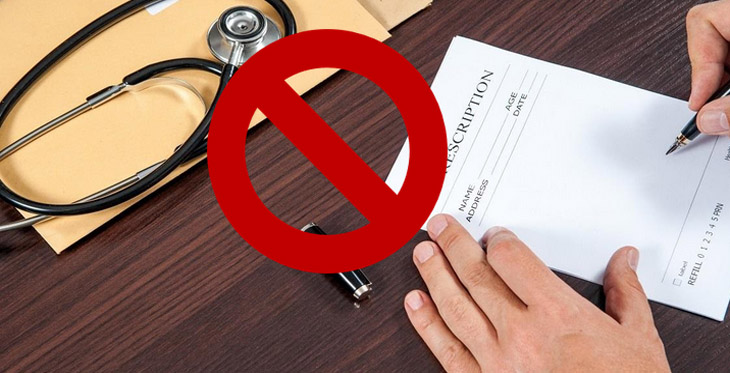The percent of eligible Arizona prescribers EPCS enabled is 23 percent above the national average as of February 2020. Learn what EPCS is and how it benefits both patients and providers statewide.
What is EPCS?
Electronic prescribing of controlled substances (EPCS) eliminates paper prescriptions, which can be stolen, duplicated or altered. In 2017, Arizona mandated prescribers have electronic access to a patient’s controlled substance prescription history via the Controlled Substance Prescription Monitoring Program, vital to identify potential opioid abuse through oversight of patients’ past twelve (12) months of controlled substance medication prescriptions.
Why was it important for Arizona to mandate EPCS?
According to the National Institute on Drug Abuse (NIDA), more than 130 people in the United States die of an opioid overdose every day. AZDHS reports more than two Arizonans die each day, and between June 15, 2017 and February 27, 2020, there were 4,357 suspected opioid deaths in Arizona. There are both emotional and financial costs to this epidemic. The CDC reports that $55 billion in health and social costs are spent annually in this country on prescription opioid abuse. This is why Arizona’s EPCS legislation is so crucial!
Why is EPCS different than eRx?
The EPCS differs from electronic prescribing (eRx) in that:
- DEA Certification is required for EHR/e-prescribing applications.
- Identity proofing is in place to confirm that a provider is who they say they are to be authorized to prescribe controlled substances.
- Two-factor authentication is required by the DEA for electronic signing of controlled substance prescriptions.
Access control must be established within EPCS software to manage utilization permissions of users
Are there new mandates and regulations for EPCS prescribers in Arizona?
There have been several changes to the federal and state laws prescribers in Arizona must be aware of to remain in compliance for EPCS.
The SUPPORT for Patients and Communities Act (HR6), requires the use of e-prescribing for schedule II-V controlled substances covered under a Medicare Part D prescription drug plan, or a Medicare advantage prescription drug plan starting January 2021.
On the state level, House Bill 2075 contained several amendments to Arizona Senate Bill 1001 – the Az Opioid Epidemic legislation:
- Removed cumbersome waiver process
- Specified initial schedule II controlled substances prescriptions limited to 5 day supply except:
- 14 day supply limit following surgical procedure
- On oncology diagnosis situations
- During traumatic injury pain management
- Specified schedule II controlled substances requirements for compounding (for direct administration), for long-term care facility residents, for hospice care patients
- Confirmed Veterinarians are not required to EPCS until Veterinary EPCS software is “widely” available
In addition, several clarifications were offered when schedule II controlled substance prescriptions can be handwritten and faxed:
- Rx is written in AZ to be filled outside of Arizona
- Rx is for medication that requires compounding of two or more ingredients
- Rx is for medication that is not in the e-prescribing database
- Rx for medication-assisted treatment (MAT) for a substance use disorder
- Rx to be dispensed at Veteran’s Administration facility, health facility on military base, HIS facility and tribal owned clinic
- Rx for resident of a long-term care facility
- Rx for a patient enrolled in an AZ state licensed hospice program
- To be compounded for direct administration to a patient
- Prescriber or pharmacy system not operational/available in timely manner
In addition to complying with the law, what are the other benefits of EPCS?
From improved work efficiency, to patient safety and satisfaction, there are several benefits to EPCS. They are:
- Improved patient safety – Clinical alerts guard against drug-to-drug and drug-to-allergy interactions, inappropriate dosing, duplicate therapies, reduces paper-based prescribing errors, including illegible handwriting, misinterpreted abbreviations and unclear dosages.
- Increased workflow efficiency – EPCS provides the ability to e-prescribe all prescriptions – legend drugs as well as controlled substances for more efficient medication reconciliation.
- Reduced prescription call backs – EPCS can help reduce the amount of call backs from pharmacists who need to clarify an order.
- Cost savings for patients – Prescribers can view in real-time whether a given medication is covered by the patients plan and how much a patient’s insurance plan will pay. Depending on the health plan, lower-cost alternatives may be displayed as well as actual patient co-pays.
- Increased patient satisfaction – With EPCS, the medication is ready when the patient arrives at the pharmacy, with the formulary compliance check already in place, providing a more efficient experience for patients and contributes to better patient medication adherence.
To learn more about EPCS, or for EPCS program information or assistance, contact Connie K. Ihde-Cohen, Director of Programs, Health Current, at erx@healthcurrent.org or call 602-688-7210.
For information about joining Health Current, Arizona’s Health Information Exchange (HIE), contact recruitment@healthcurrent.org, or call 602-688-7200. Learn more at healthcurrent.org.
|
SIDE BAR: Arizona’s EPCS Legislation Timeline (2010-2021)
|

